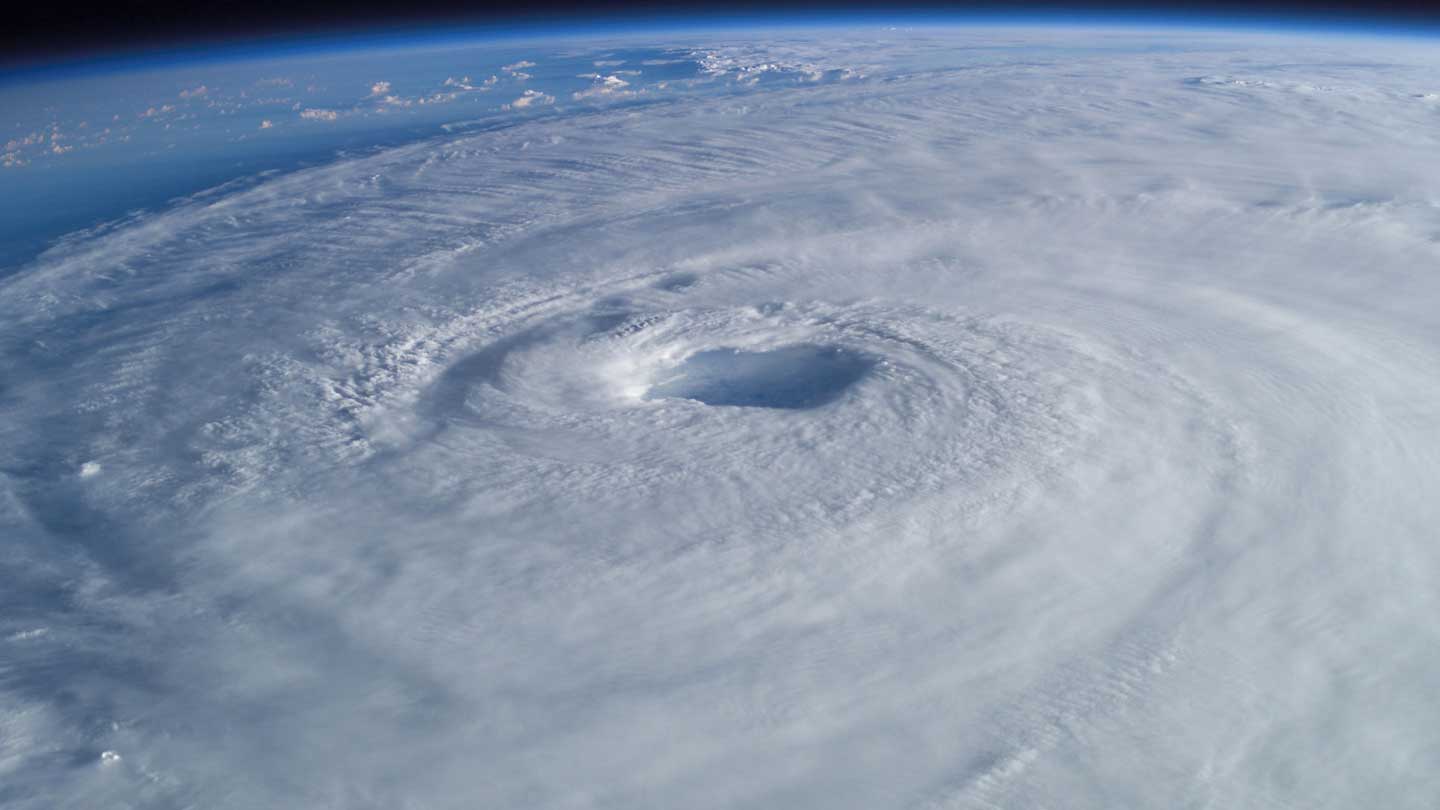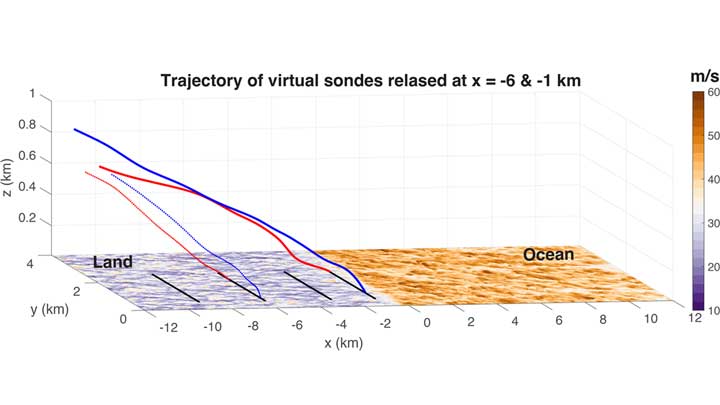
Viewed from the International Space Station, Hurricane Isabel made landfall on Sept. 18, 2003, in eastern North Carolina, near Drum Inlet, along the Outer Banks. The storm was a Category 2 hurricane at the time of landfall.
Courtesy NASA
Dr. Xiaomin Chen, a researcher at The University of Alabama in Huntsville, has published a paper in Geophysical Research Letters, a journal of the American Geophysical Union (AGU), that offers a new model capable of resolving turbulence and eddies within hurricanes as they transition from water to land. The innovation provides a way to quantify the uncertainty of 10-meter wind estimates above the surface derived from different observation-based approaches for the first time. These estimates are crucial for classifying hurricanes based on the Saffir-Simpson Hurricane Wind Scale, a 1 to 5 rating system that is based on one-minute sustained wind speed and used to estimate potential property damage and the danger to life.

Chart depicting 10-meter wind speed from a turbulence-resolving model simulation, overlaid by two virtual sondes trajectories released at the maximum and minimum wind location from 1- and 6-km inland, respectively.
Courtesy Xiaomin Chen
“Obtaining wind measurements overland under hurricane conditions is risky and challenging,” says Chen, an assistant professor of atmospherics and Earth science at UAH, a part of The University of Alabama System. “Either the observational instruments or power infrastructure may fail in those extreme conditions. This study leverages a novel turbulence-resolving modeling framework to ‘generate’ these hard-to-obtain measurements in the coastal region.”
Chen’s primary research is aimed at understanding the boundary layer processes that contribute to the intensity and structural changes of hurricanes at various stages, including during and post landfall. His work utilizes a combination of manned and unmanned aircraft observations and turbulence-resolving large-eddy simulations to improve the modeling of boundary-layer processes in hurricane conditions.
“Hurricanes feed on boundary layer heat fluxes and dissipate through boundary layer friction,” the researcher notes. “Wind-related compound hazards occur in the boundary layers. One interesting phenomenon during hurricane landfalls is the formation of an internal boundary layer (IBL) overland.”
IBLs are regions where atmospheric flow adapts to changes in surface conditions, like the coastal interface between land and ocean. These changes cause wind patterns to shift, leading to the formation of an IBL where the wind profile adjusts to the new surface conditions. Understanding IBLs is vital to accurately model and predict hurricane intensity and near-surface wind hazards, especially during landfall.

Dr. Xiaomin Chen, an assistant professor of atmospherics and Earth science at UAH.
Michael Mercier | UAH
“Due to the relatively sparse near-surface anemometer wind measurements, earlier studies used ground-based radar-retrieved or radiosonde winds aloft to project the 10-m wind speeds over a relatively broad area,” Chen says. “These methods do not properly account for the IBLs, and the related uncertainty in the 10-m wind estimates is challenging to assess. Fine-resolution, turbulence-resolving modeling resolves the IBL properly, offering the first opportunity to quantify the uncertainty related to the 10-m wind estimates for those methods.”
Chen uses specially configured turbulence-resolving computer model simulations to provide insights into the effects of land surface types and distance inland on the near-surface wind profile to glean findings that can guide future field campaigns and hurricane landfall studies.
“The novelty of these turbulence-resolving simulations is the inclusion of actual hurricane physics across a small-patch model domain, offering a computationally efficient approach to test the impact of different factors, such as land surface types. In contrast, turbulence-resolving simulations of the entire tropical cyclone circulation extending hundreds of miles remains computationally prohibitive for most modellers,” the researcher notes.
“The following work will involve two parallel efforts,” Chen says regarding the future of this research. “One, we aim to run these turbulence-resolving models over more realistic terrain along the Gulf coast and study the wind gusts. And two, we will leverage the ground-based radars and near-surface wind measurements to explore a better approach to estimate 10-m winds during hurricane landfalls. These missions are supported by our recently funded National Science Foundation project, (WHIRLTC).”